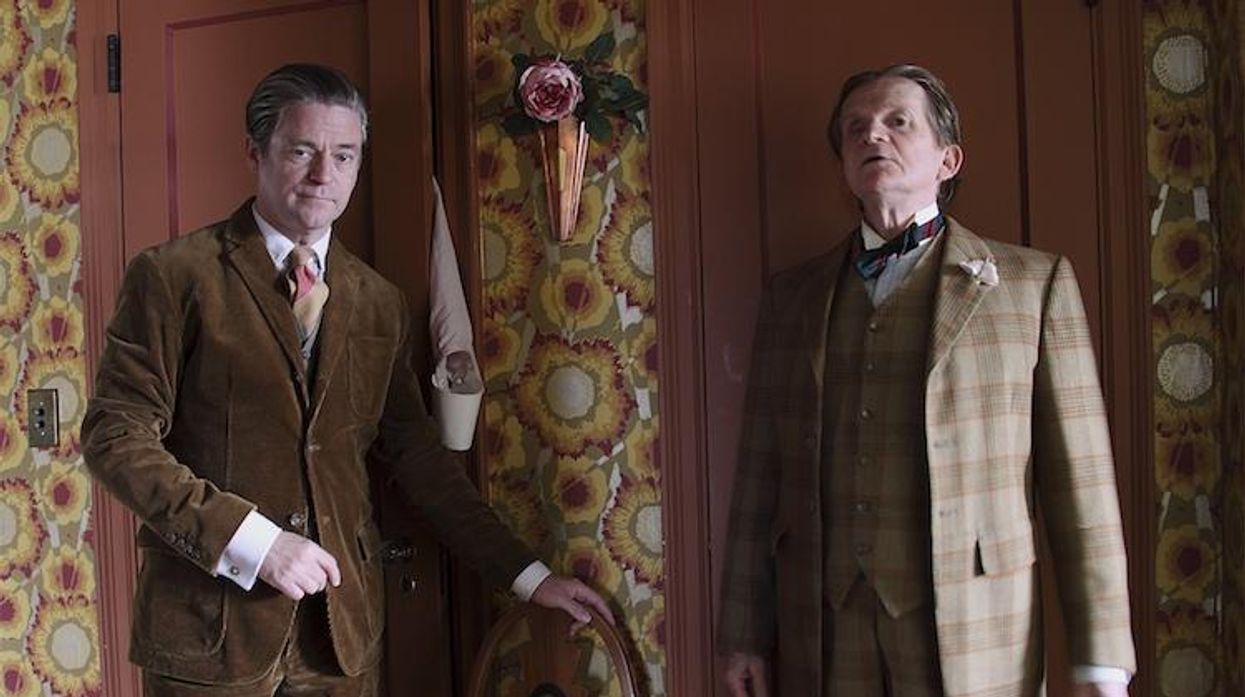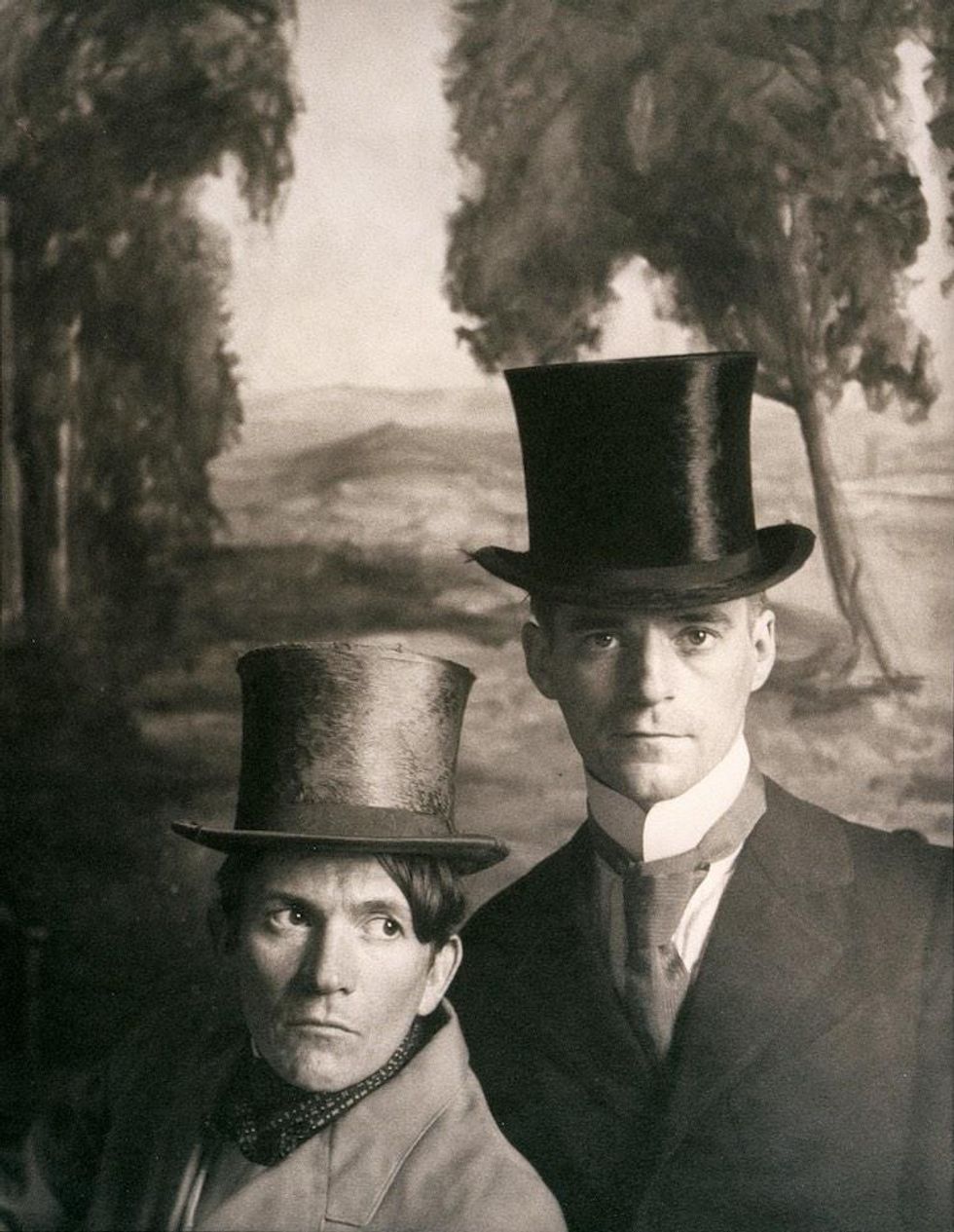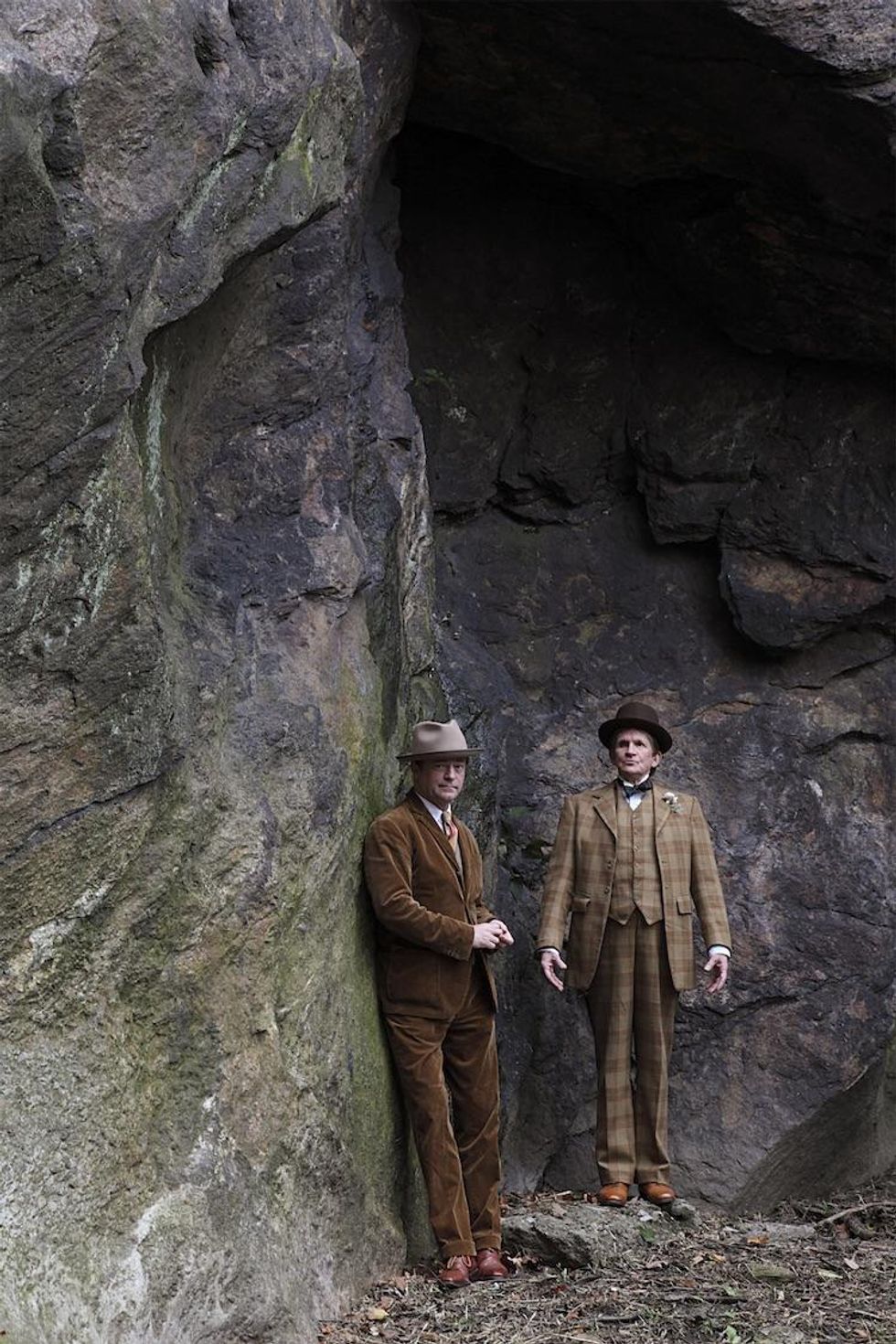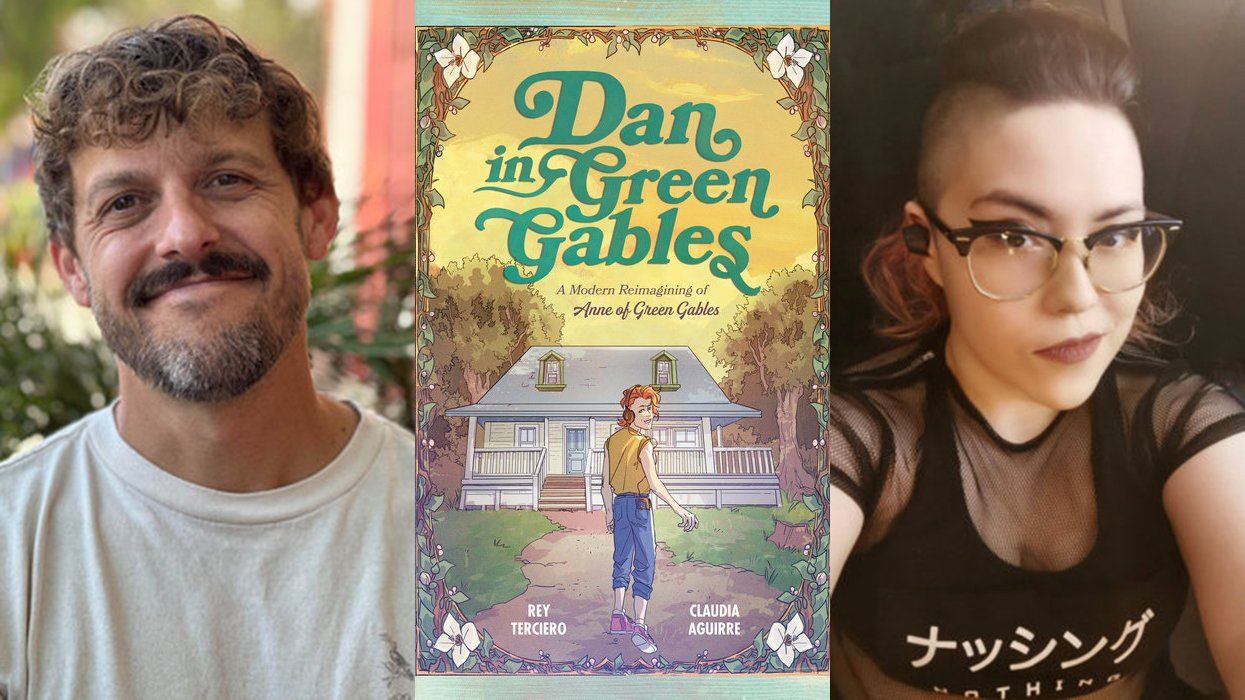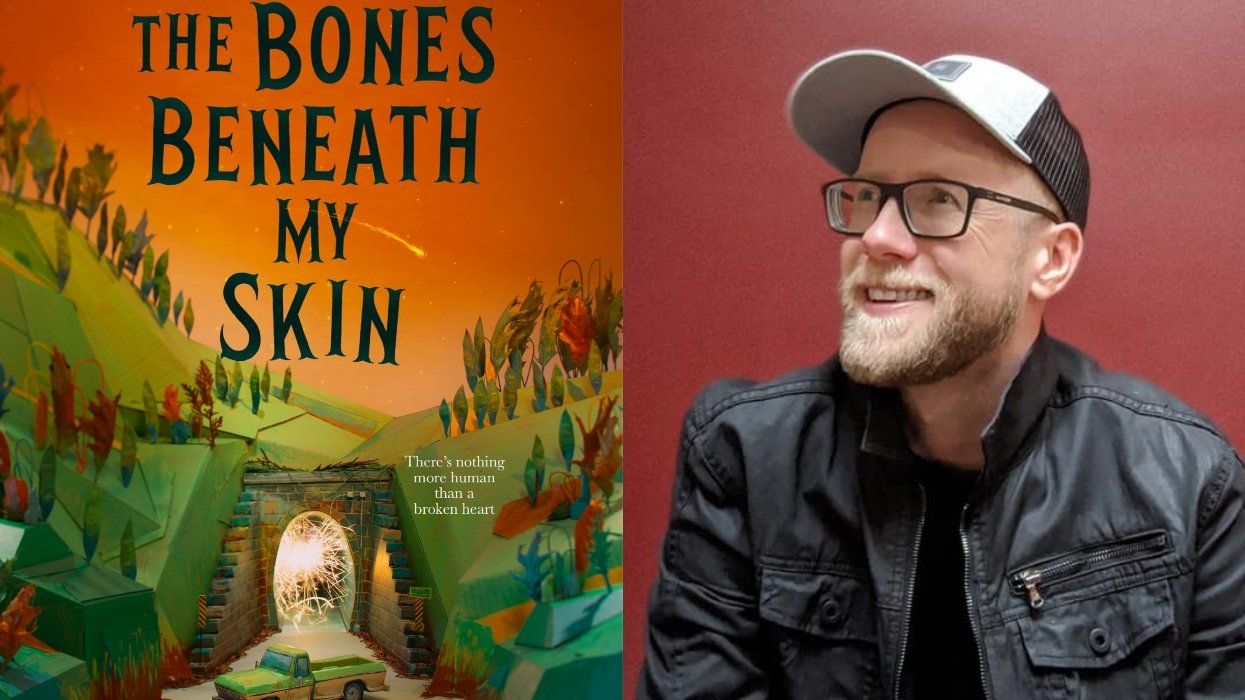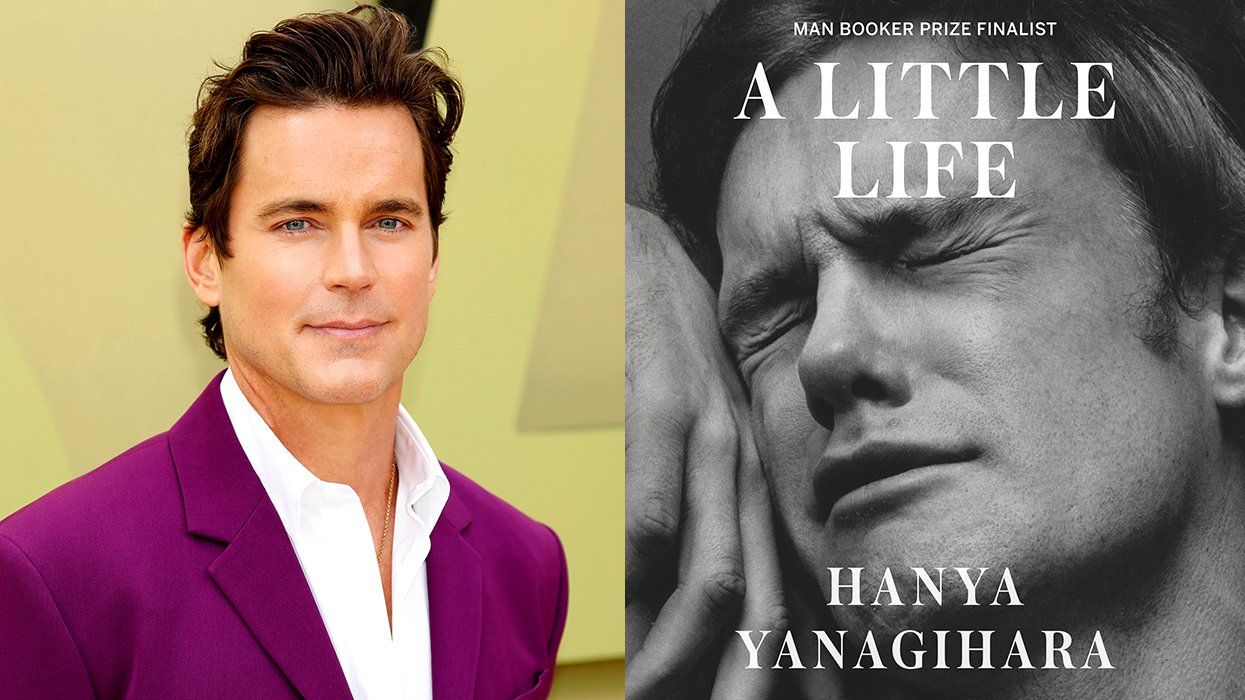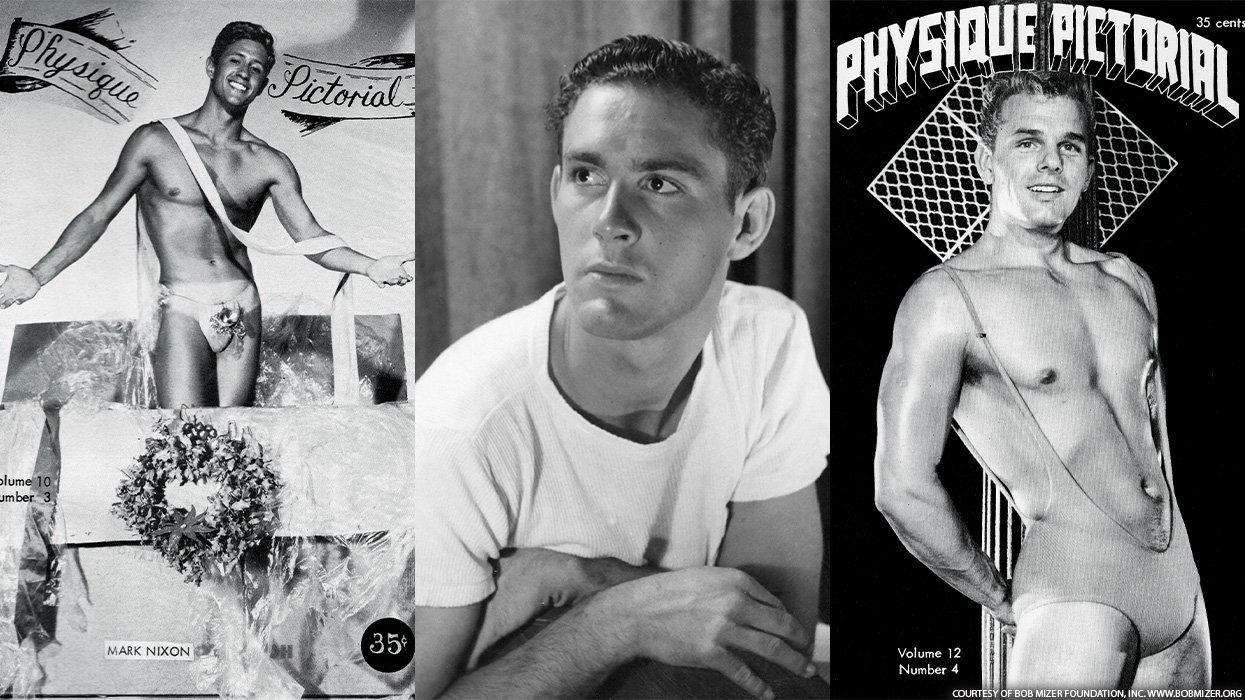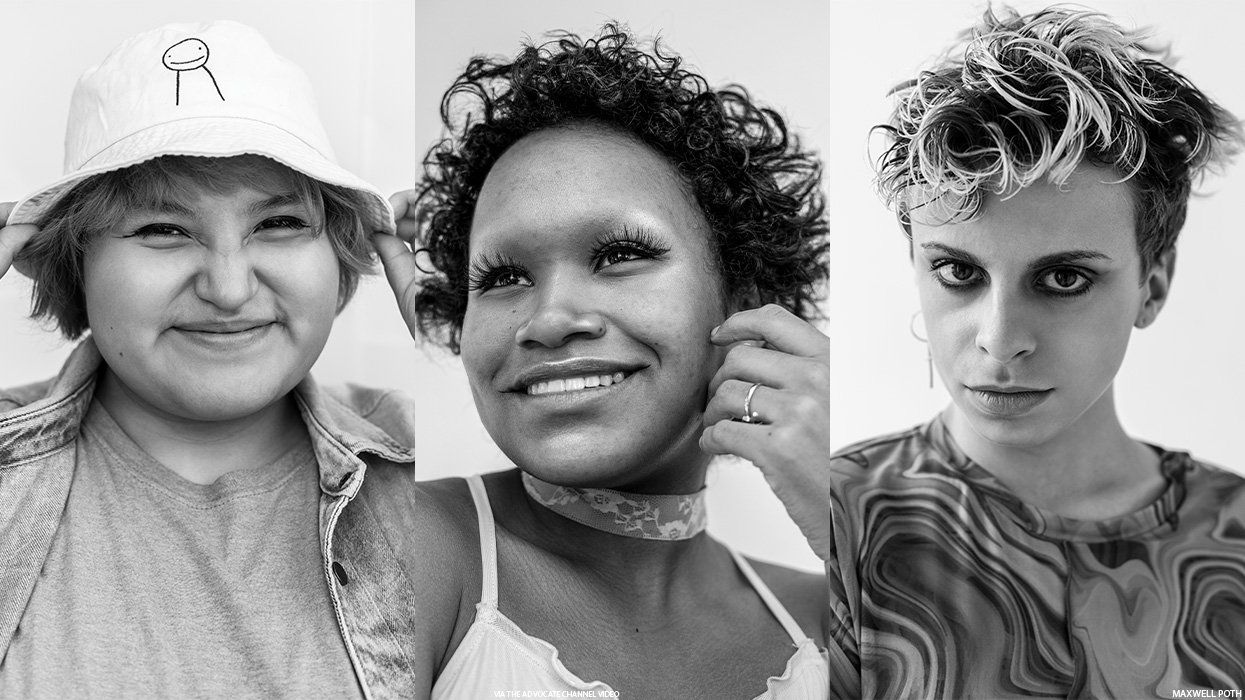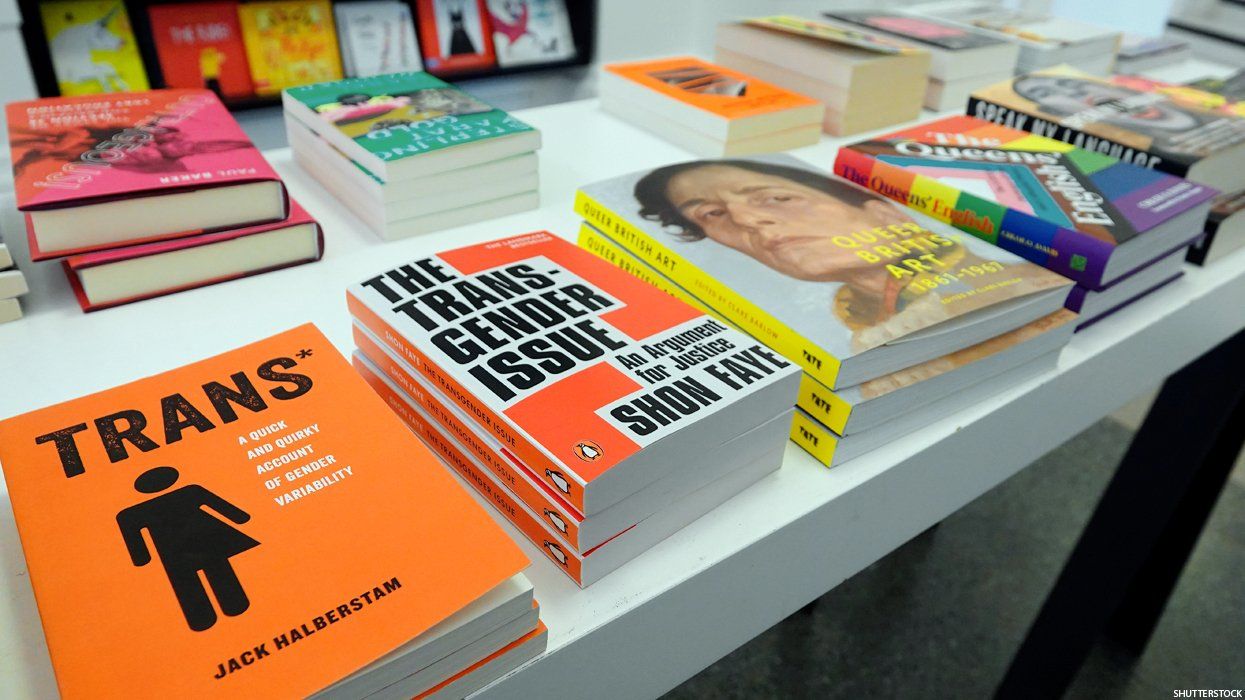In the spring of 1895, Oscar Wilde, the renowned Irish writer and aesthete, was tried for and found guilty of the crime of "gross indecency"--essentially another way of saying homosexual acts. He was given the maximum sentence of two years hard labor, and in November of that same year was transferred to Reading Gaol where he served until his release in May 1897. Virtually friendless, financially ruined and in poor health, Wilde died three years later in Paris.
His precipitous downfall from the heights of London society, the defiant pose he struck during the trial--his defense of "the love that dare not speak its name" under cross-examination became famous--and the degradation he suffered have turned Wilde into something more than a literary icon. With the rise of the LGBTQ rights movement, he has increasingly been viewed as a gay martyr.
"They took him down," says Peter McGough, half of the artist duo McDermott & McGough, whose public installation The Oscar Wilde Temple opened September 11 in Manhattan's Church of the Village. "Straight society, they took him down."
McGough and artistic partner David McDermott first conceived a project dedicated to Wilde nearly two decades ago. Their collaborative artistic practice in the '80s was firmly rooted in notions of homoeroticism in the mid-19th and early 20th centuries. Both artists (they were a couple at the time) lived and dressed in the manner of 19th century dandies, going so far as to convert their East Village townhouse to its mid-19th century conditions. McGough recalls reading Richard Ellmann's Pulitzer Prize-winning 1987 biography of Wilde and being struck by the details of Wilde's decline.
But it wasn't until meeting curator Alison Gingeras that the Temple began to take shape. After a planned installation in Ireland was thwarted by Catholic protests, Gingeras pitched it to the LGBT Community Center of New York, where film producer Donna Berwin was able to help find a space for the project in the nearby Church of the Village.
The Oscar Wilde Temple was initially intended as a celebration of the unprecedented victories in LGBTQ rights the world has seen over the past decade--from marriage equality to the landmarking of the historic Stonewall Inn. But the rise of Trumpism has in a sense lit a fire in the 59-year-old McGough. "I've just had it!" he exclaims in the Greenwich Village apartment he now shares with his longhaired Chihuahua Queenie, rattling off the countless assaults he and McDermott have suffered over the decades living openly as gay men, as well as the political assaults the current administration has launched against LGBTQ rights. (McDermott, still firmly engaged in the duo's "time experiment," spends his time in Ireland, continuing to live strictly within the parameters of an early 20th century lifestyle).
Gingeras agrees that 2017 is a particularly potent time to remember a renegade like Wilde. "He believed that it was our duty to disobey, that we should never conform to the strictures of society," she explains. "I think that kind of courage is a courage that we all need, across identities, at this moment."
The Temple, then, will serve as a safe haven for the LGBTQ community in these tumultuous times, as well as a monument to Wilde and other LGBTQ martyrs like Harvey Milk and Marsha P. Johnson. But while it borrows from the iconography of religion and will be available for weddings and memorials, McGough is emphatic that there will be no place for any sort of dogma.
Related | Power to the People: Exploring Marsha P. Johnson's Queer Liberation
"It's a temple--not a chapel, not a church," he insists, comparing the project to the temples you'll find in Greece and Italy. "I'm borrowing from that, for sure. It's a place of worship."
Appropriately, however, there's more than a little irony to the work. The Temple's "pulpit" is an overturned soapbox, and McGough is enthusiastic about touring the installation around the country as a kind of Aesthetic tent revival after it travels to London next year. "Humor heals pain," McGough says. "But I think my sense of rage gave it more meaning. I thought, I have to do this as a service. I have to give this so people can be comforted."
The project will also give back to the community in more concrete ways; proceeds from renting the space for private ceremonies will benefit The Center's programs for homeless LGBTQ youth.
So, how would Wilde--a fair-weather Anglican who converted to Catholicism on his deathbed--react to being turned into a quasi-religious figure? McGough suspects he would love it. "When Wilde was in prison he became interested in Christ--the suffering and the message of redemption and the message of hope." And hope is precisely what McGough hopes his temple will give people. "I'm taking all my velvet rage and my compassion and love and putting it in there," he says. "The rage moves me to get it done, but when I see what I'm doing I'm moved by the beauty and hat it could mean for other people."
Photos Courtesy McDermott & McGough


